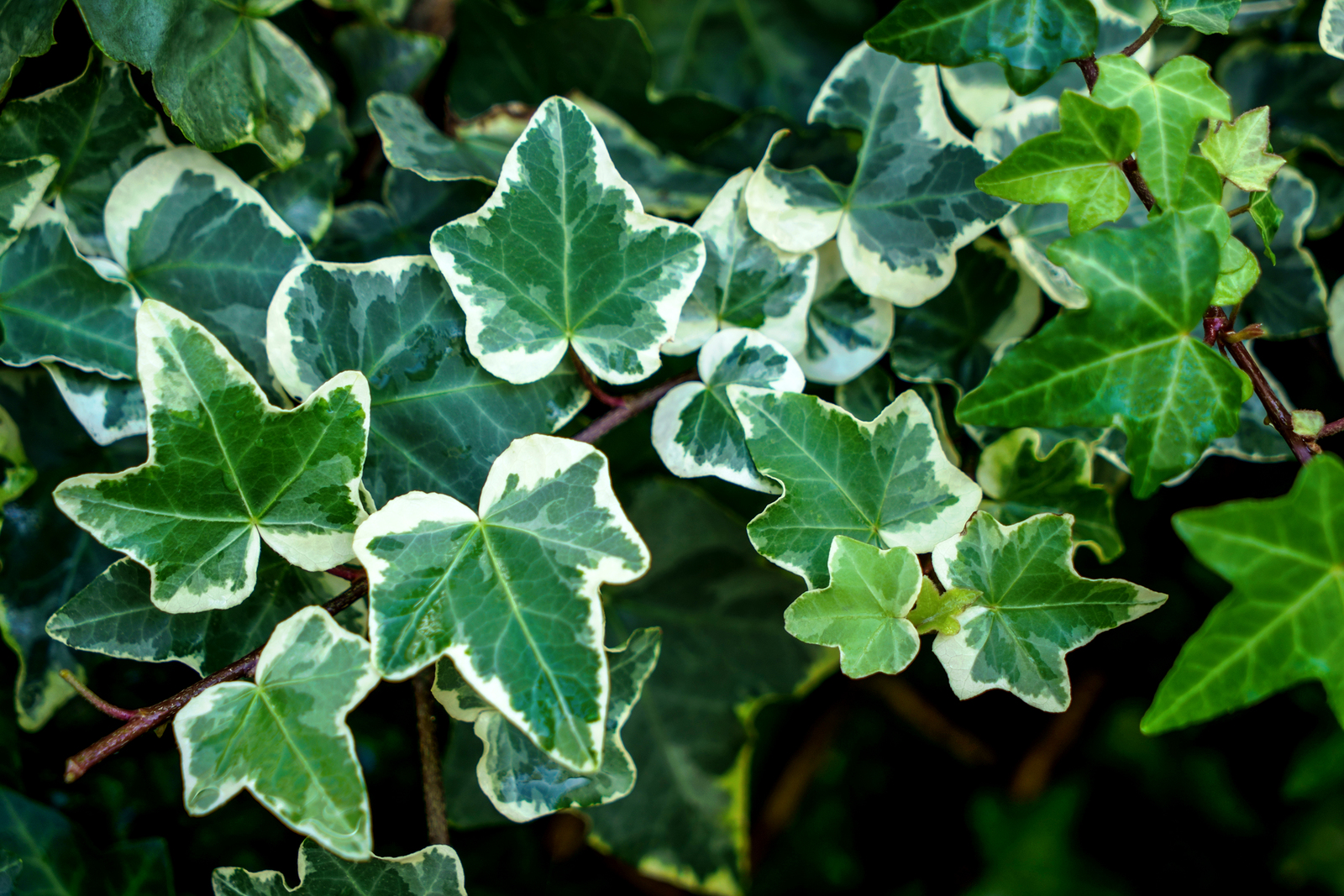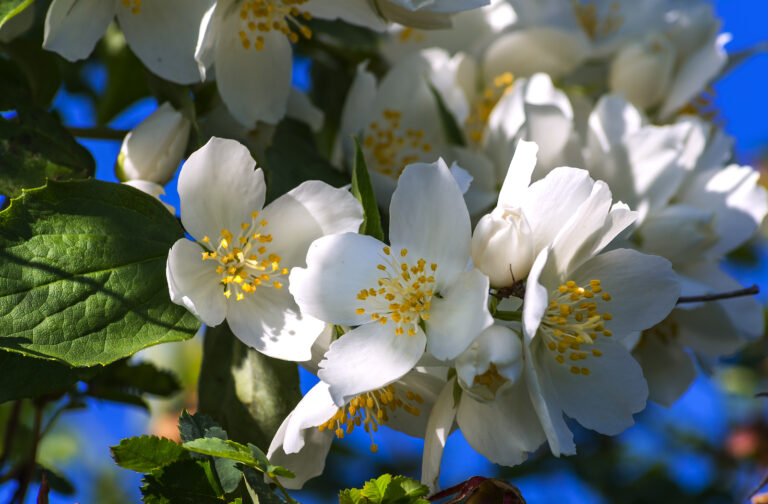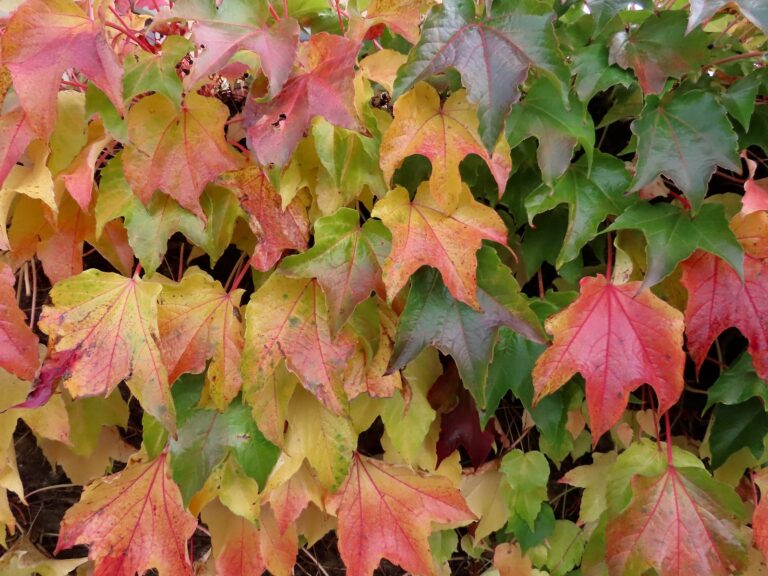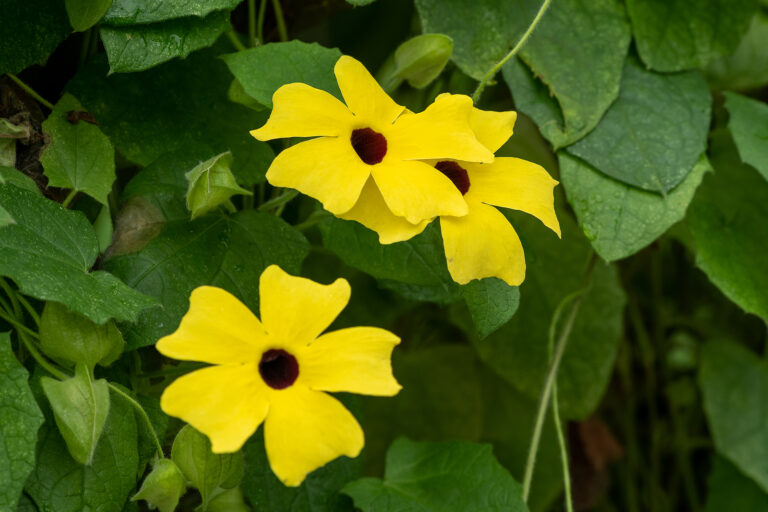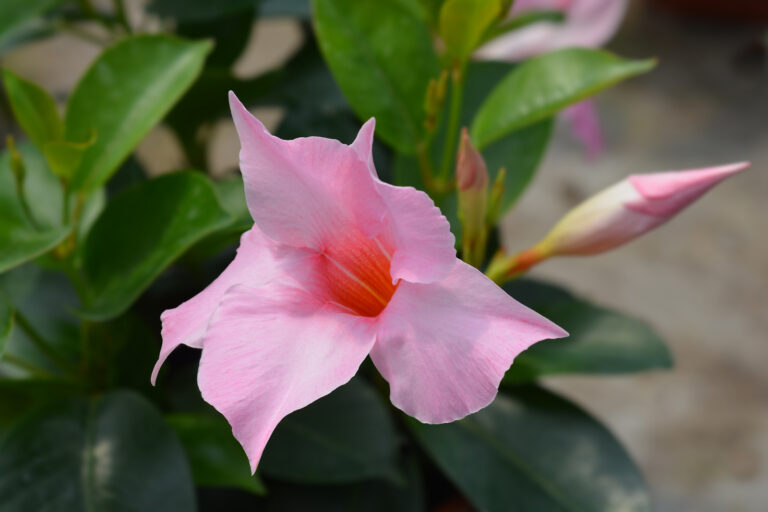How to Grow Hedera – Ivy
Hedera–commonly called ivy–is an evergreen woody-stemmed, trailing, or self-clinging climber. Hedera species have 3- to 5-lobed leaves which are sometimes variegated.
Ivies have two distinct stages of growth. When young, ivies creep or climb; they have adventitious specialized rootlets for climbing or clinging. As adults, ivies produce aerial “bushes” often high in the tops of trees.
Ivies spread horizontally over the ground; they also climb walls, fences, trellis, shrubs, and trees; sometimes a single plant will do both. Ivies can climb almost any surface using aerial rootlets. Some plants can withstand ivy growing up and over them; others, particularly fragile plants, can be smothered. Ivy can harbor slugs and snails and rodents especially when it is never cut back.
Ivy leaves are usually thick, leathery, and lobed. Mature plants develop thick stiff branches. Ivies bear round clusters of small greenish flowers followed by black berries.
Ivy experts categorize ivies into four types: (1) miniatures with leaves smaller than 1 inch (2.5cm) long, (2) oddities with unusual traits such as upright or non-vining, (3) variegated with leaves of more than one color other than green, and (4) arborescent, ivies with mature stems that do not climb.
Hedera is a genus of 8 to 12 species of evergreen, woody-stemmed, trailing, or self-clinging climbers. Hedera is native to light woods in North Africa and the Canary Islands, the Azores, and from Western Europe to the Himalayas, China, Korea, and Japan.
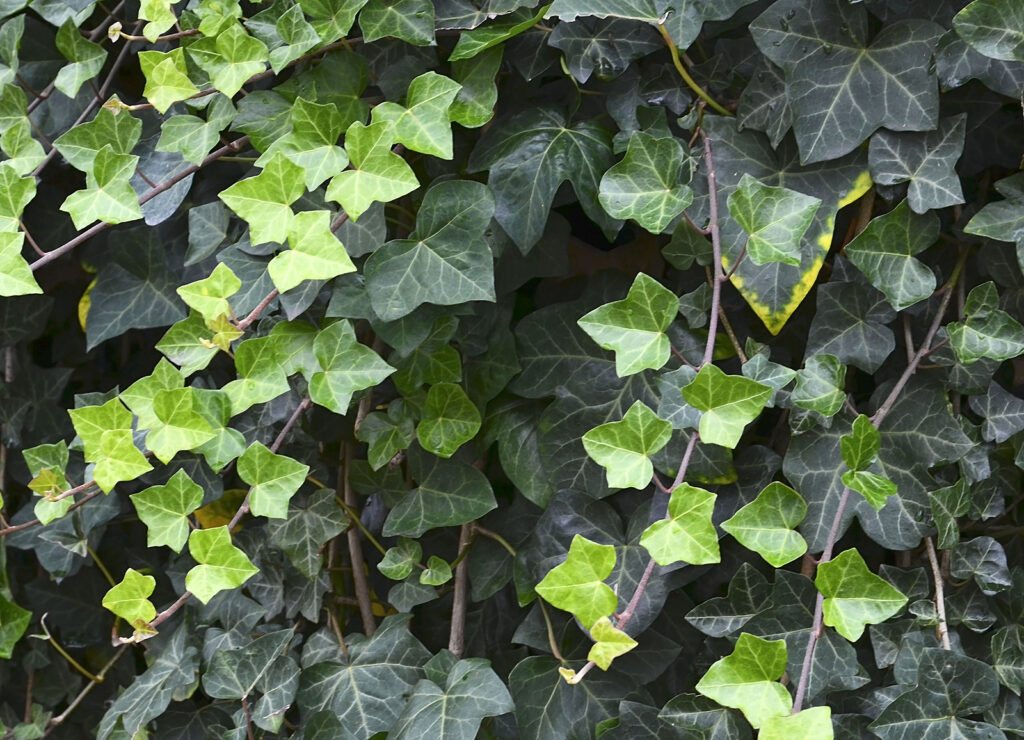
Get to know Hedera
- Plant type: Evergreen
- Growing zones and range: Zones 4 to 10.
- Hardiness: Hardy to Zone 4
- Height and width: Varies; trailing ivy can grow up trees to 60 feet (18m) or more.
- Growth rate: Fast
- Form and habit: Creeping and climbing
- Foliage: Alternate, 3- to 5-lobed or entire leaves, which are sometimes alternatively variegated; adventitious rootlets and minutely hairy young shoots in their youth, and aerial “bushes,” often high in the tree tops with entire, usually broadly ovate leaves
- Flowers: Spherical umbels of tiny, 5-lobed, yellowish green, bisexual flowers
- Fruits: Spherical, black, sometimes blue, orange, or yellow fruits, .13-.4 inch (4-9mm) across
- Bloom time: Autumn
- Uses: Grows extensively on walls, tree trunks, signs, and other stationary objects, erosion control, and slippage on slopes, groundcover
- Garden companions: Many trees and shrubs can grow quite compatibly in ivy, but small, soft, or fragile plants will never exist for long with healthy ivy
- Common name: Ivy
- Botanical name: Hedera
- Family name: Araliaceae
- Origin: North Africa, the Canary Islands, the Azores, Madeira, from Western Europe to the Himalayas, China, Korea, and Japan
Where to plant Hedera
- Plant Hedera in shade in hot climates.
- Plant Hedera in fertile, humus-rich, moist but well-drained soil.
When to plant Hedera
- Set container-grown Hedera in the garden in spring or autumn.
Planting and spacing Hedera
- Space Hedera 12 to 18 inches (30-45cm) apart depending on the coverage you want and the size of the leaves at maturity.
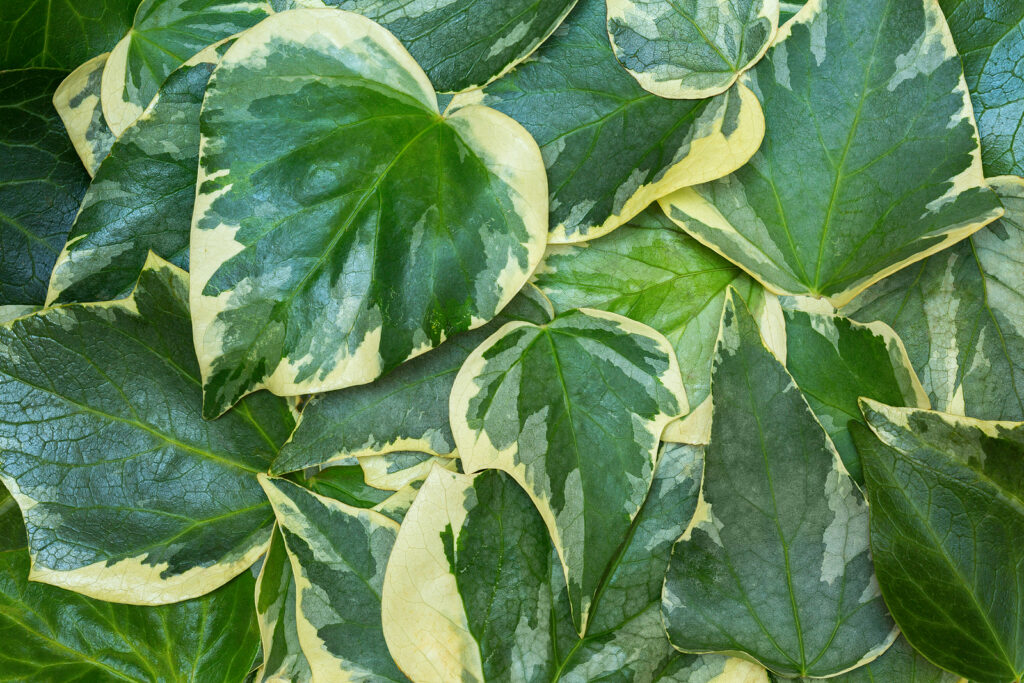
How to water and feed Hedera
- Give Hedera regular to moderate water.
- Feed Hedera with an all-purpose organic fertilizer in spring.
How to care for Hedera
- Generally speaking, Hedera trail along the ground and will climb if given the support of a tree, wall, or similar surface; because they do not twine, they must be fastened to trellises or chain-link fences.
- Most Hedera groundcover need trimming around edges (use hedge shears or sharp spade) two to three times a year; fence and wall plantings need shearing or trimming two or three times a year.
- When ground cover builds up higher than you want, mow it with rugged power rotary mower or cut it back with hedge shears; do this in spring so ensuing growth will quickly cover bald look.
- Hedera can be grown in hanging baskets or trained to climb on supports.
Growing Hedera as a houseplant
- Hedera canariensis and H. helix can be grown as houseplants.
- Hedera needs bright light to grow indoors; variegated varieties need direct light to maintain their best leaf color.
- Hedera can tolerate a wide range of temperatures, but they grow best in a slightly cooler room.
- Hedera needs medium humidity; if the air is dry, the leaf tips may turn brown.
- the soil should be kept evenly moist.
- Fertilize Hedera regularly in spring and summer.
Hedera pests and diseases
- Hedera are susceptible to attacks by spider mites, aphids, mealybugs, and scale insects; they can be a haven for slugs and snails; and also harbors rodents, especially when not cut back.
- Bacterial spot, stem rot, and fungal leaf spots can also be a problem.
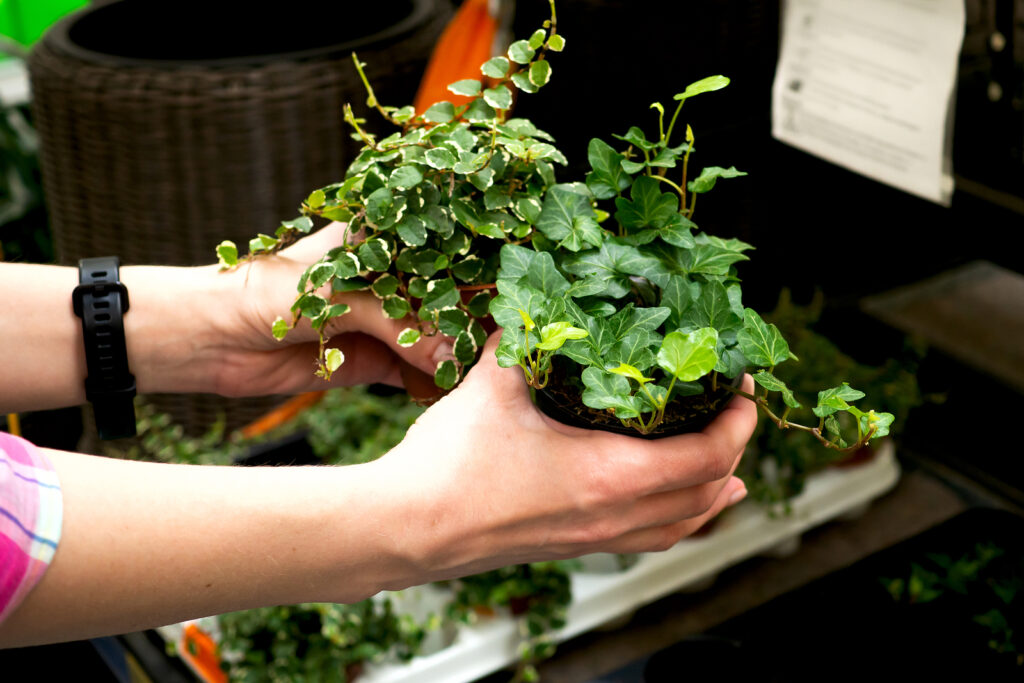
Hedera propagation
- Root 4-6 inches (10-15cm) semi-ripe Hedera cuttings of juvenile growth from spring to autumn.
Hedera varieties to grow
- Hedera azorica, Azores ivy, vigorous climber with white-hairy new growth, and large, fan-shaped, matte, light green leaves, to 3 inches (8cm) long, each with 5-7 nearly equal lobes. Azores.
- H. canariensis, Canary island ivy, North African ivy, vigorous climber with heart-shaped or 3-lobed, glossy, emerald-green leaves, 4-8 inches (10-20cm) long, borne on long, maroon leaf stalks. Algeria, Tunisia. Zones 8 to 10.
- H. colchica, Colchis ivy, Persian ivy, vigorous climber bearing heart-shaped, leathery, dark green leaves, 3-8 inches (8-20cm) long, aromatic when crushed. Suitable for groundcover or for a large wall. Caucasus, North Iran. Zones 7 to 10.
- H. helix, English ivy, the hardiest ivy. Vigorous, variable, self-clinging climber or trailing perennial with 3- to 5-lobed, broadly ovate to triangular, glossy, dark green leaves, 1.5-2.5 inches (4-6cm) long. Europe. Zones 4 to 9.
- H. hibernica, Atlantic ivy, vigorous climber producing broadly ovate to triangular, mid- to dark green leaves, 2-3 inches (5-8cm) long, with 5 triangular lobes and light green veins. Useful for a wall or as groundcover. Western Europe.
- H. maderensis, Madeira ivy, has 3-lobed, medium-size, dark matte-green leaves as wide as long, and burgundy stems and petioles. Good groundcover in warmer climates.
- H. maroccana, Moroccan ivy, 3-5-lobed, medium-size, dark matte-green leaves as wide as long, and burgundy stems and petioles. New growth comes in light green. The leaf base is cuneate to barely heart-shaped. A vigorous grower that does well in a container or as a groundcover. Atlas Mountains.
- H. nepalensis, Nepal ivy, weak-growing, self-clinging climber with usually entire, elliptic, olive-green leaves, 2.5-4 inches (6-10cm) long; the leaves may have 3-6 toothed, projecting lobes. An interesting climber for a sheltered wall. Himalayas.
- H. rhombea, Japanese ivy, self-clinging climber producing unlobed, ovate to triangular, mid-green leaves, .8-1.5 inch (2-4cm) long. Korea, Japan.

